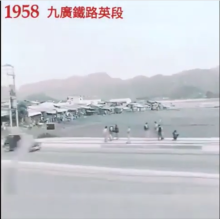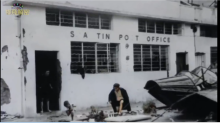Shatin old village ( 沙田舊墟) or old town existed between 1956 and 1980. Demolition took place between 1976 and 1980. The New Town Plaza was built in its place. A map can be found here:
More information:
https://mos.hk/shatin/10/19/42
In the late 1920s, Liu Xicheng, an Australian overseas Chinese, purchased a large area of salt water field opposite Shatin Railway Station, which was consisted of four lots. However, it has been vacant and has not been developed. In 1949, his son Liu Rui returned to Hong Kong from the United States. After the war, many people came to Hong Kong from the mainland. In addition, there were not many shops in Sha Tin at that time, so he planned to develop the salt water field that his father had bought earlier. However, at that time, there were already two lots sold to another person named Liu. Liu Rui decided to develop the two remaining lots he owned into markets and build houses for living.
In 1950, Liu Rui applied to the government to build a town. After approval, the reclamation and construction projects began. Since the development site was a low-lying area that was seven or eight feet lower than the Tai Po Road at the time, reclamation had to be carried out. The fill at that time came from the hilltop where Chicken Kee Farm was located; in addition, according to government regulations, all houses were of temporary nature, and the government guarantees that it will not be demolished within five years. However, after the expiration of the period, if demolition is necessary, three notices will be issued.
This market called "Sha Tin New Market" covers an area of about 150,000 square feet and was completed in 1956. There are five main streets in the market, namely Main Street, First Street, Second Street, Third Street and Fourth Street. According to government regulations, each street is 30 feet wide.
There are a total of 125 temporary houses in the market, all of which are village houses with pyramid roofs. Basically, there are shops on the ground floor and attics for people to live in. Each village house is about 750 feet. If you want to buy it, you need to pay a fee. 7,000 yuan. In addition, the monthly government rent ranges from 40 to 60 yuan. It can also be rented at 250 yuan per month. However, whether it is rented or purchased, the land rights are still owned by Liu Rui.
At that time, most of the people renting houses were outsiders, with 80% buying and 20% renting. There are various shops in the market such as grain and oil, foods, foreign goods, restaurants, cigarettes and fruits, clothing and cloth, medicines, hairdressers, ice drinks places, laundry and dyeing, paper offering shops, hardware stores, medical clinics, etc., catering to the needs of the market and nearby areas. In addition to the daily necessities of village residents, there are more modern community facilities such as markets, banks, public toilets, schools, churches, theaters, post offices, fire stations, sewers, flushing toilets etc. Before building the market, Liu Rui agreed with the government to allocate about 4,000 square feet of land in the market to the Shatin Rural Committee for related purposes.
In fact, after 1952, Sha Tin gradually became the largest recreational resort in the suburbs, with more and more tourists visiting it every year. After its establishment, Sha Tin Market soon became the only commercial market town in the region. The businesses in the market can be roughly divided into two categories: one is to provide daily necessities to residences and schools in Sha Tin Valley and as far away as Ma Liu Shui, Wu Kai Sha and other places; the other is to specialize in foreign tourists during holidays, among which restaurants are the most popular feature.
In June 1976, 28 shops near the Tai Po road were demolished for the widening of Tai Po road. The demotion of the town was completed in March 1980.


